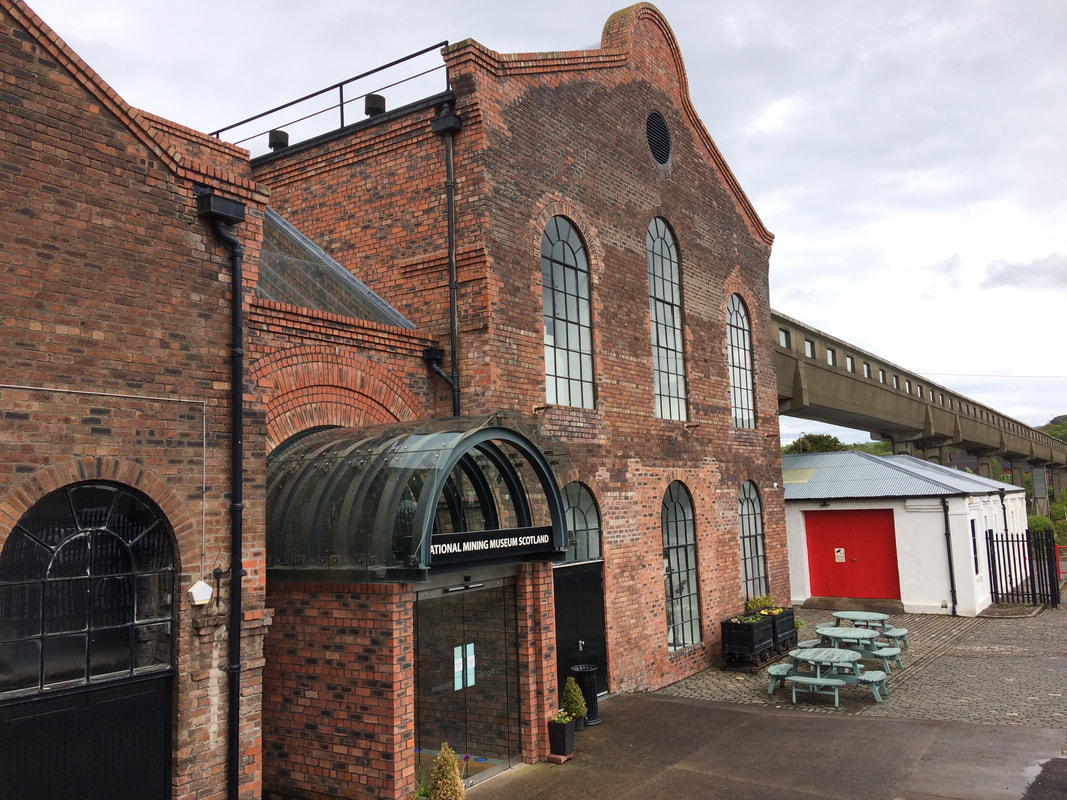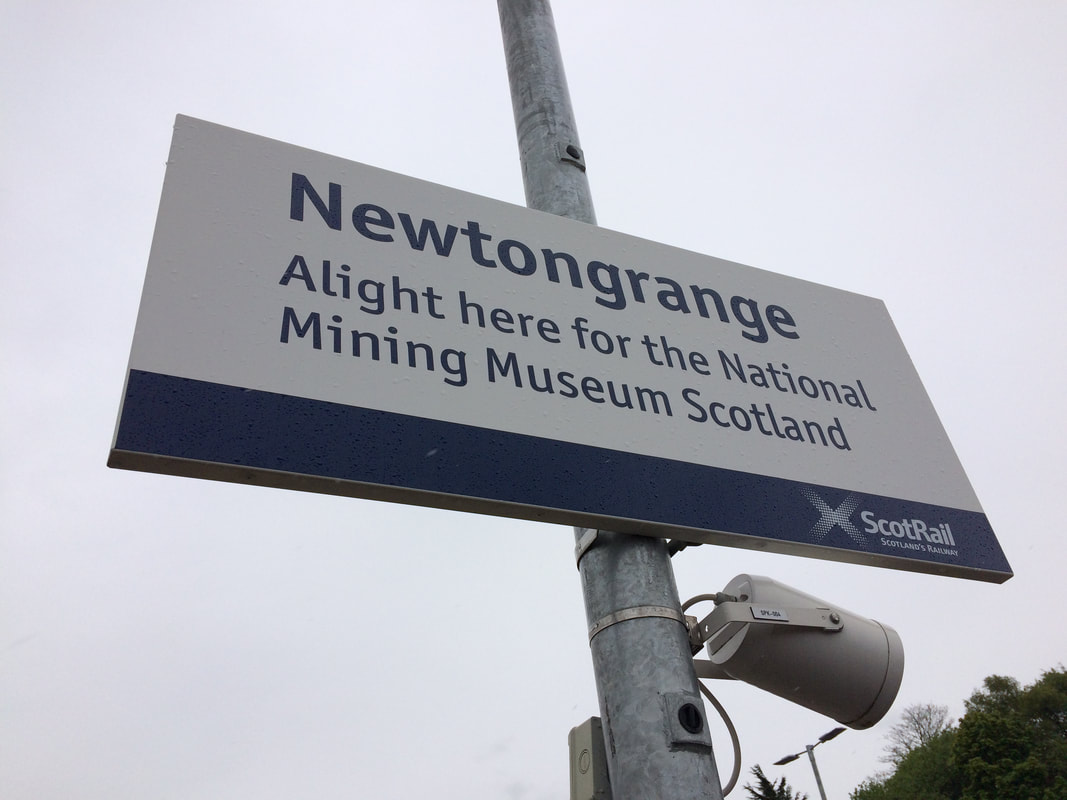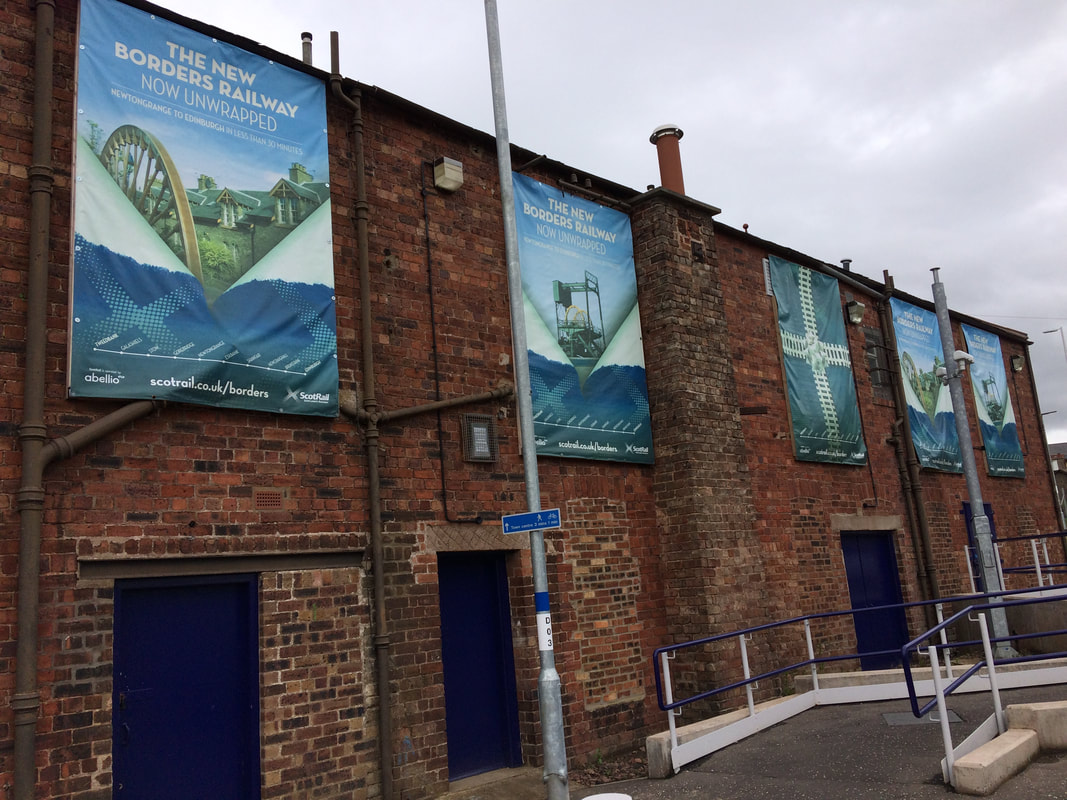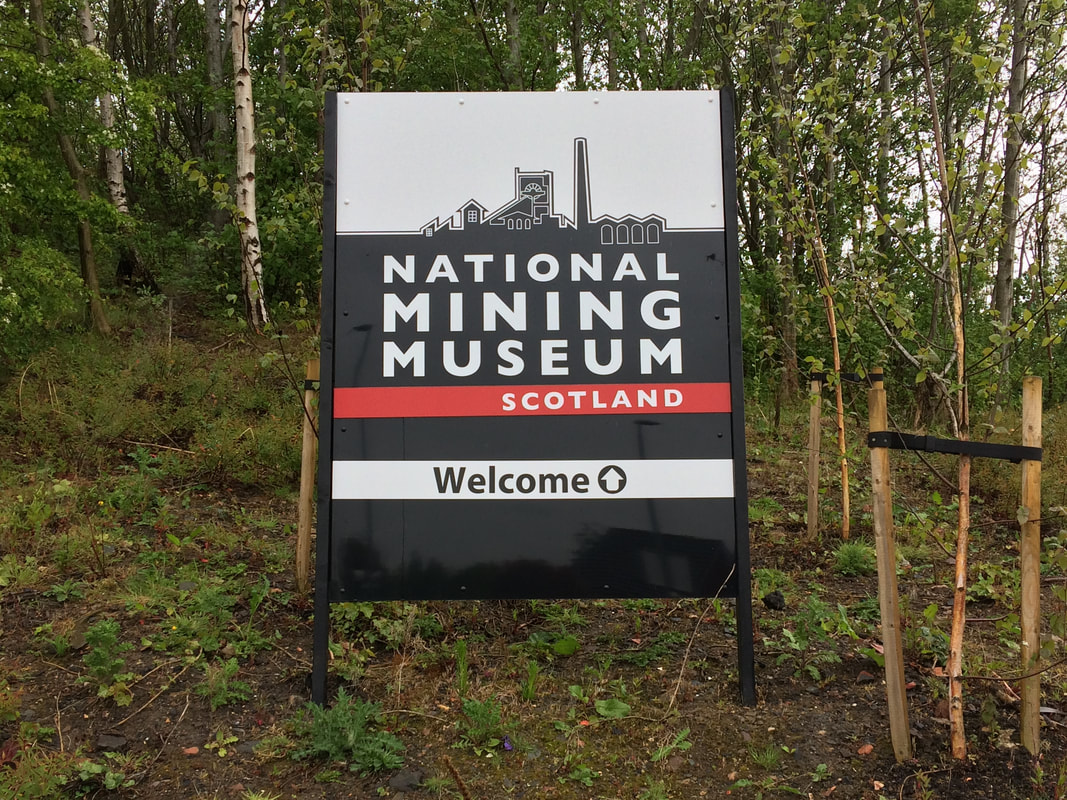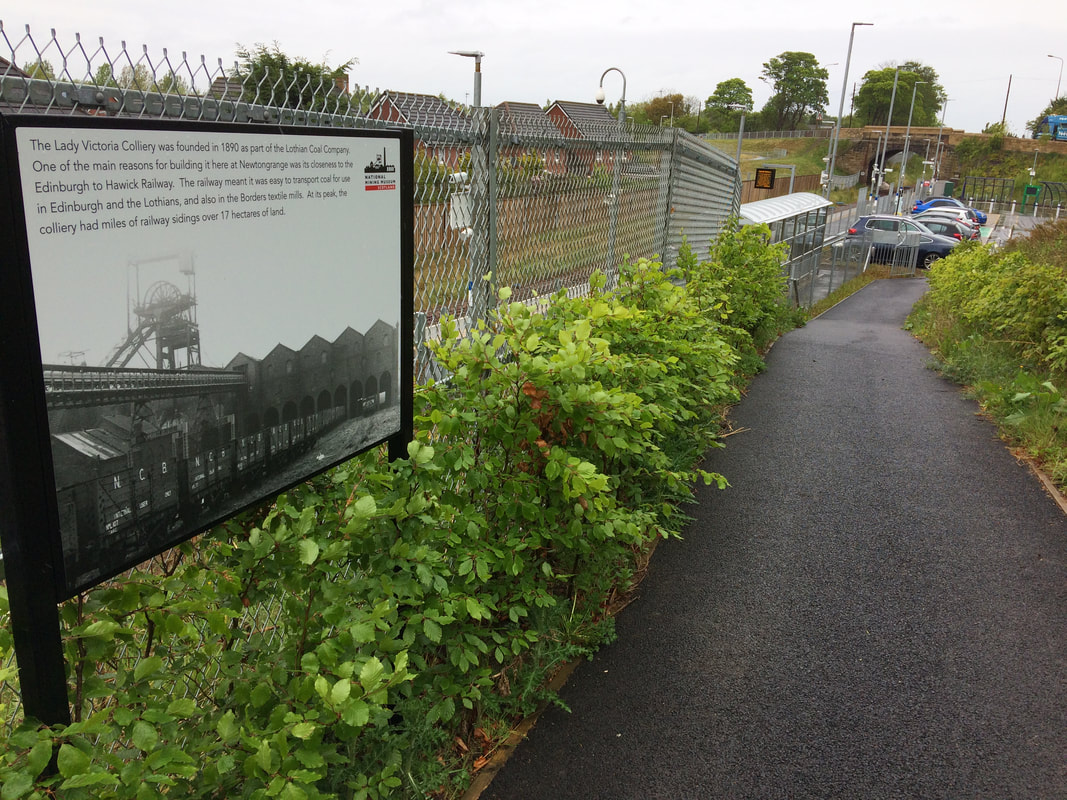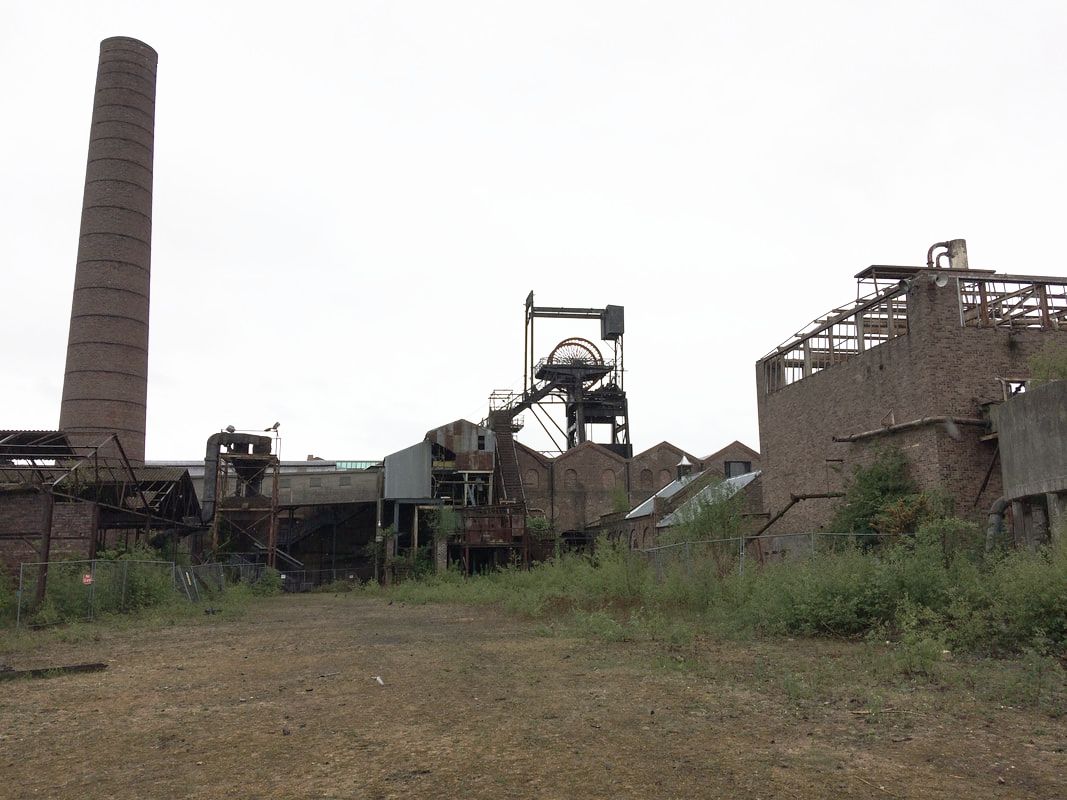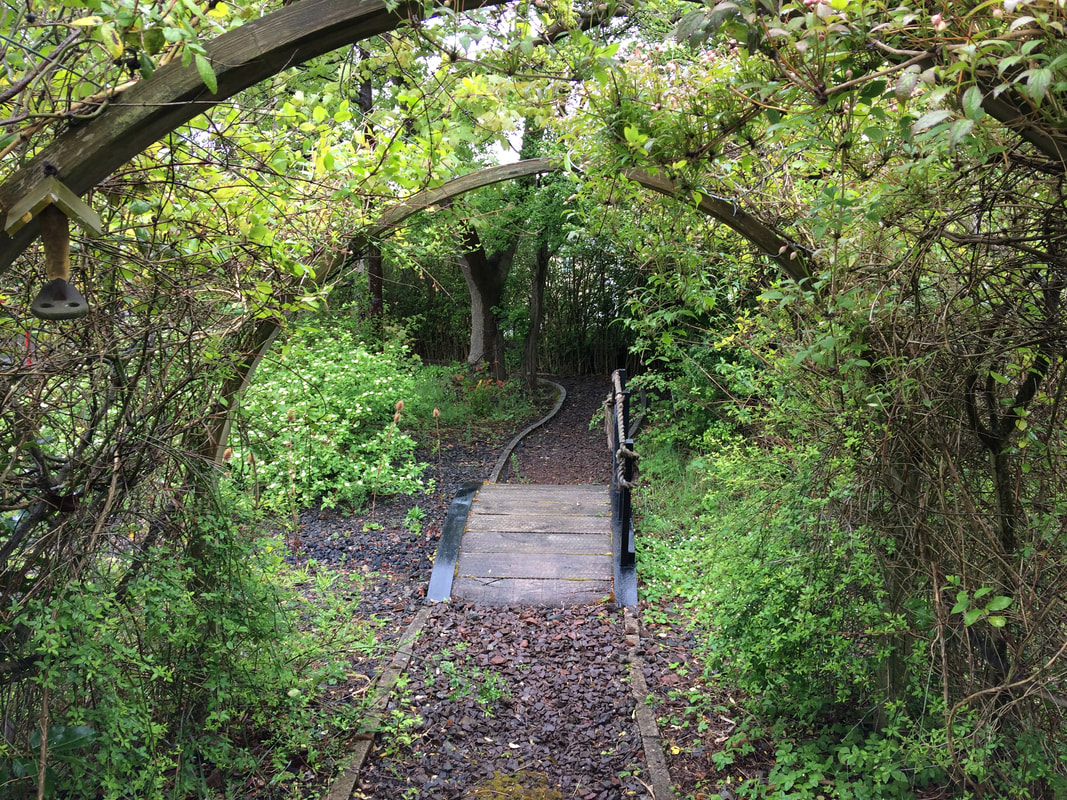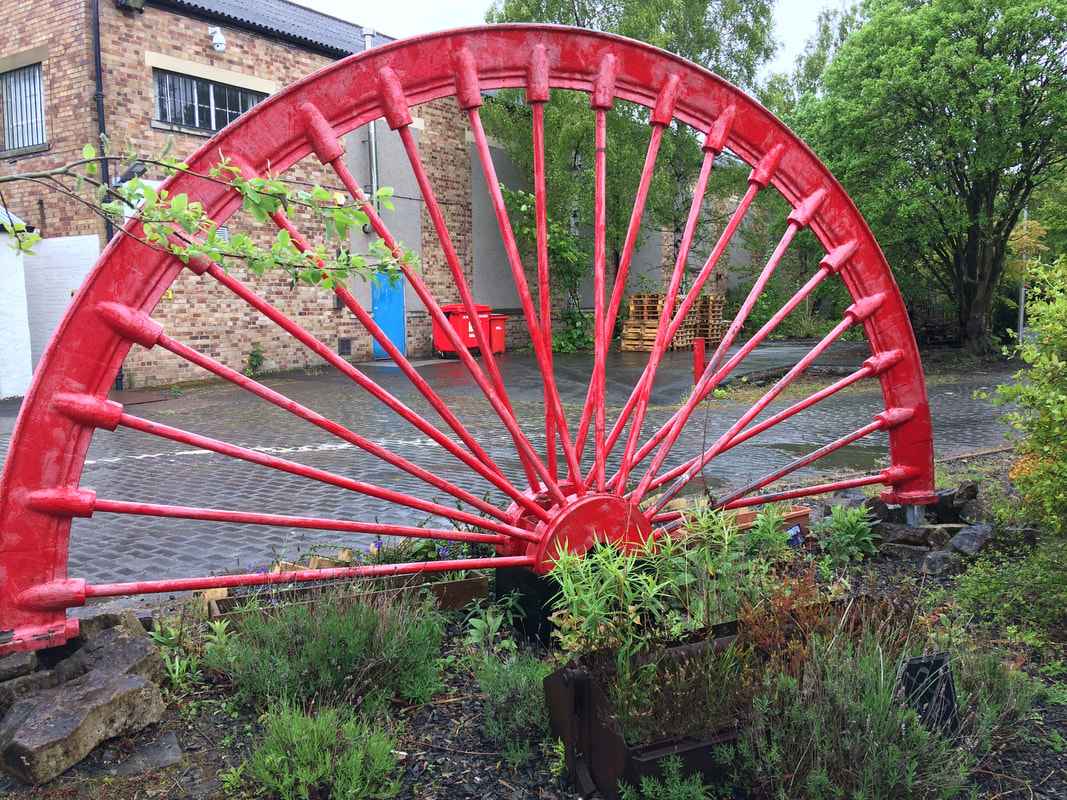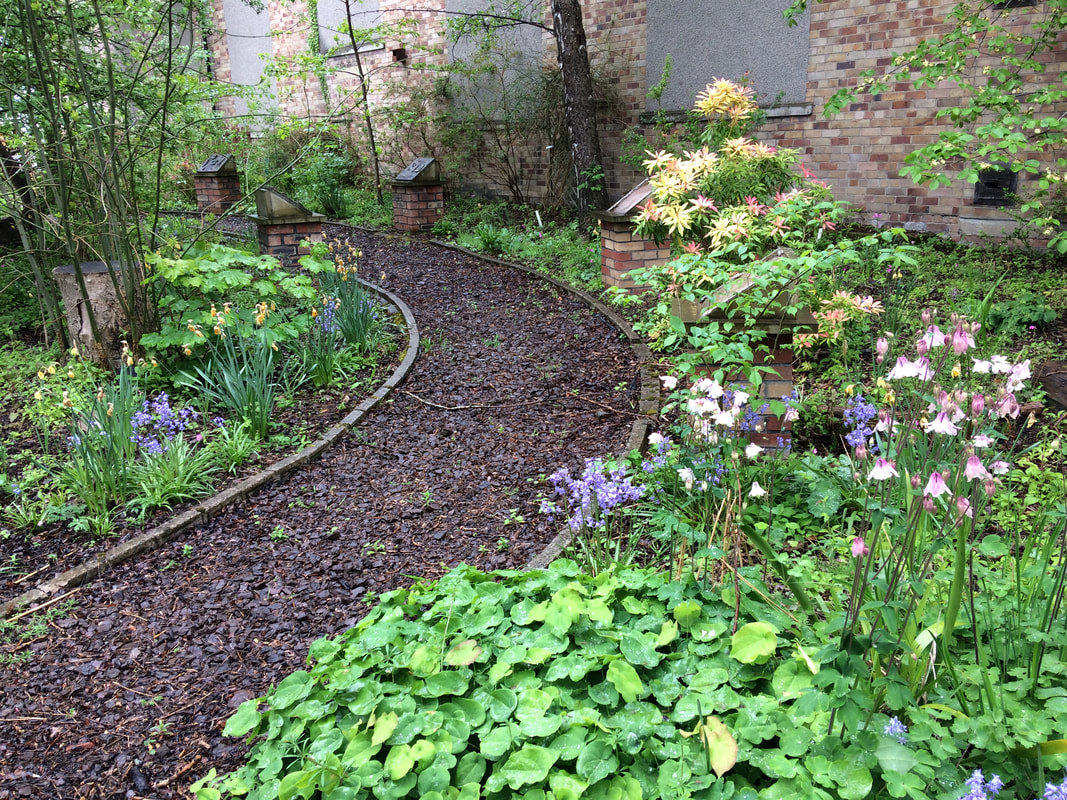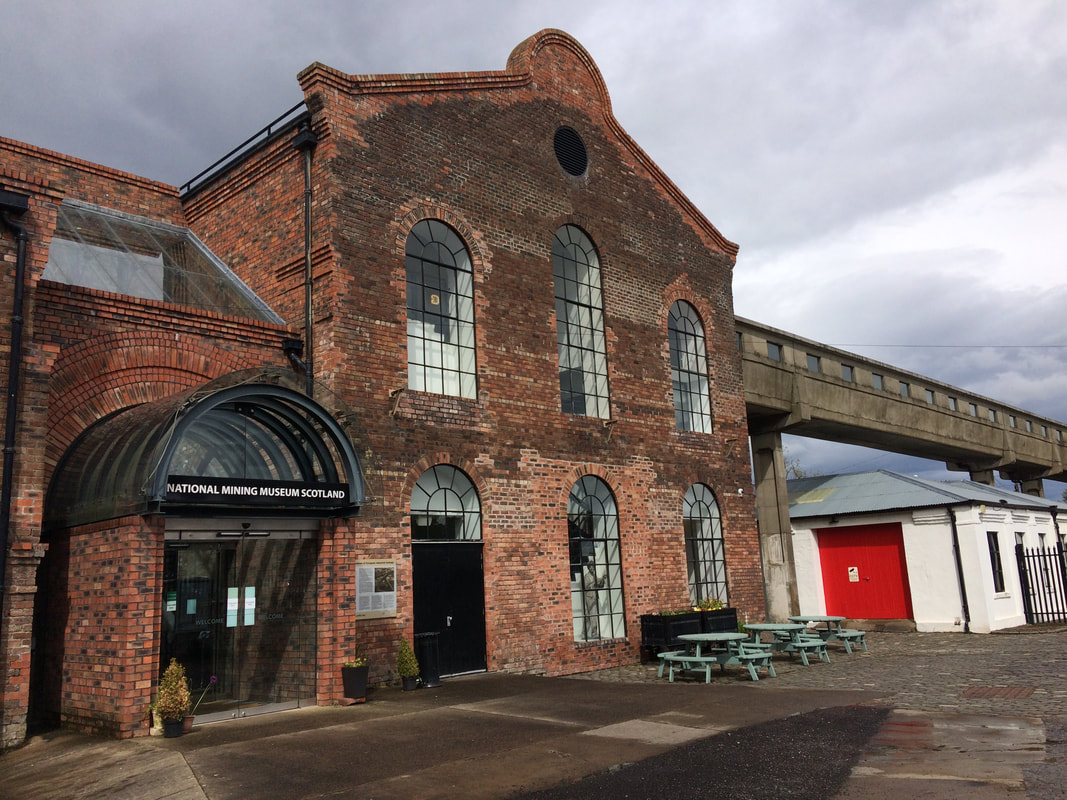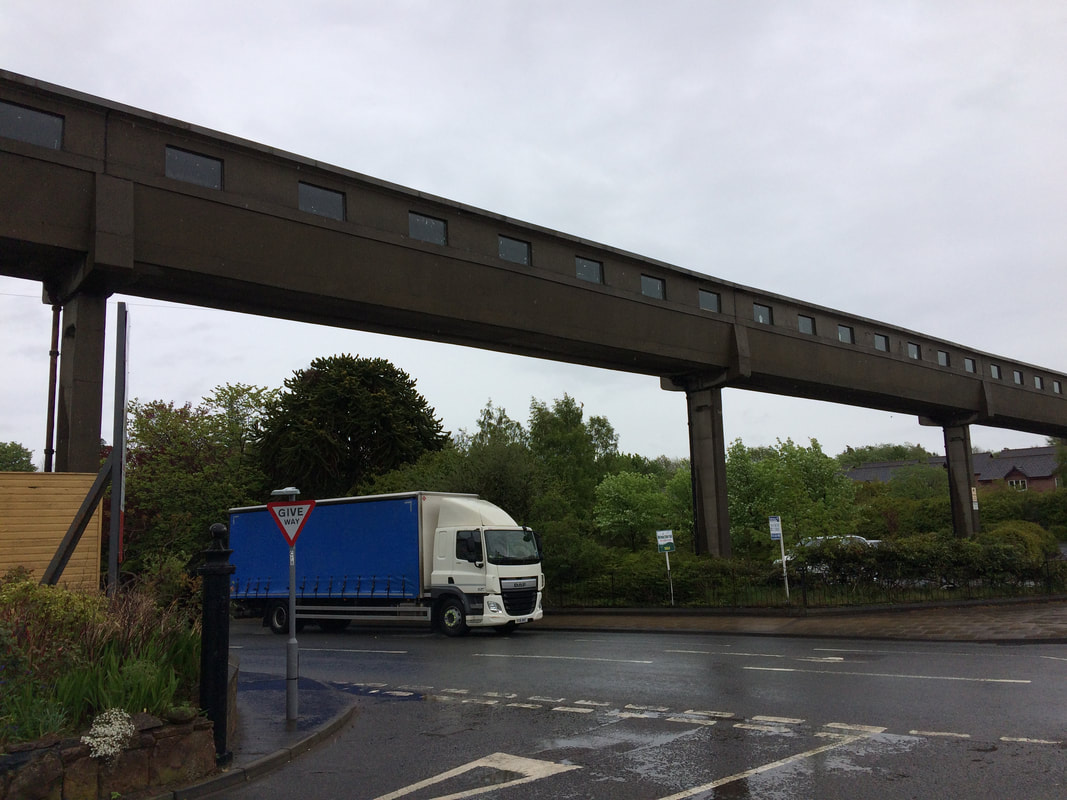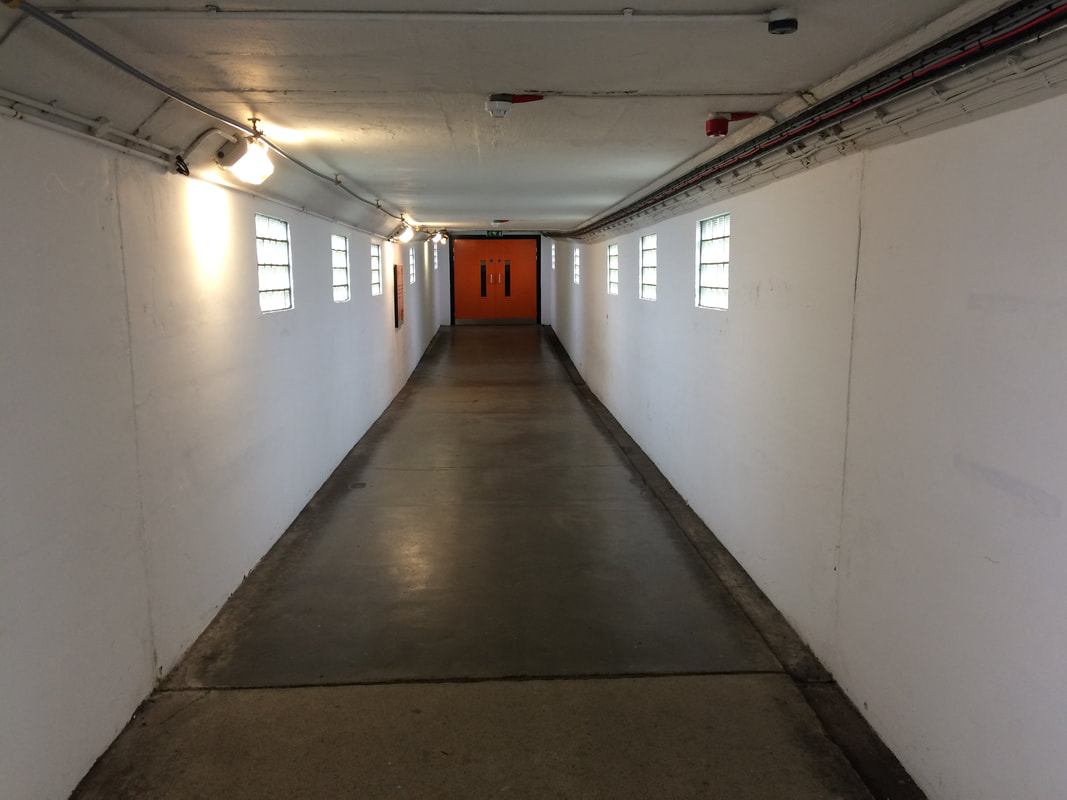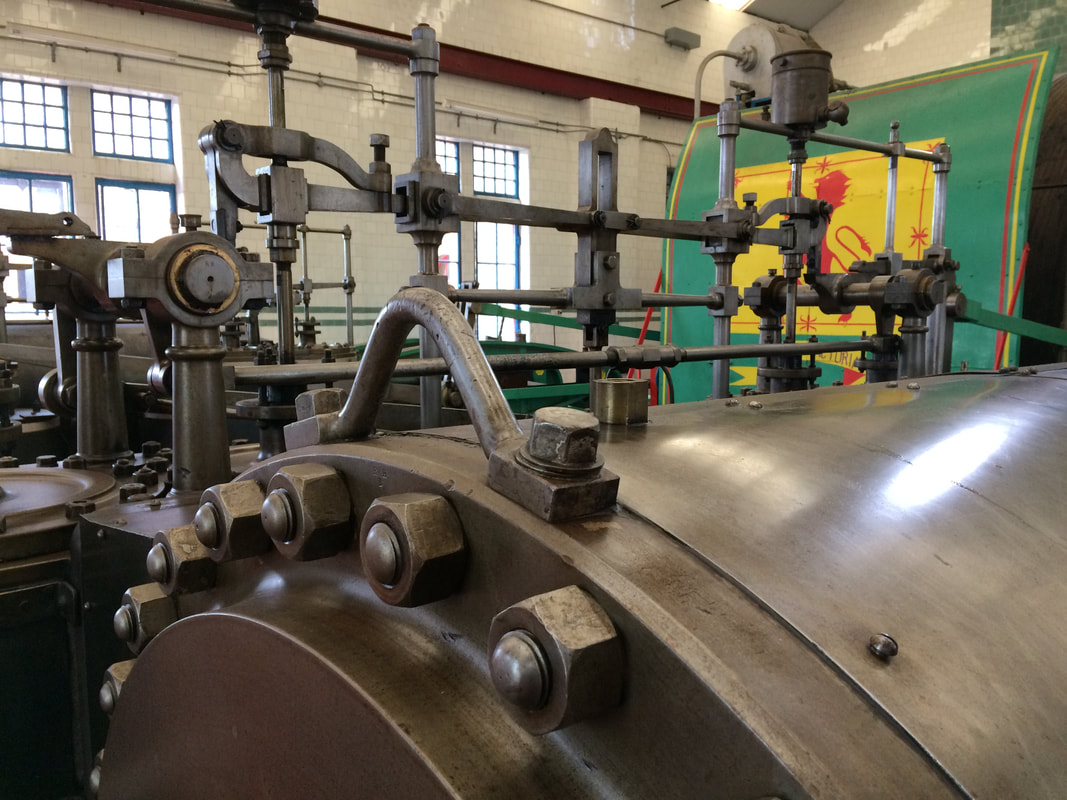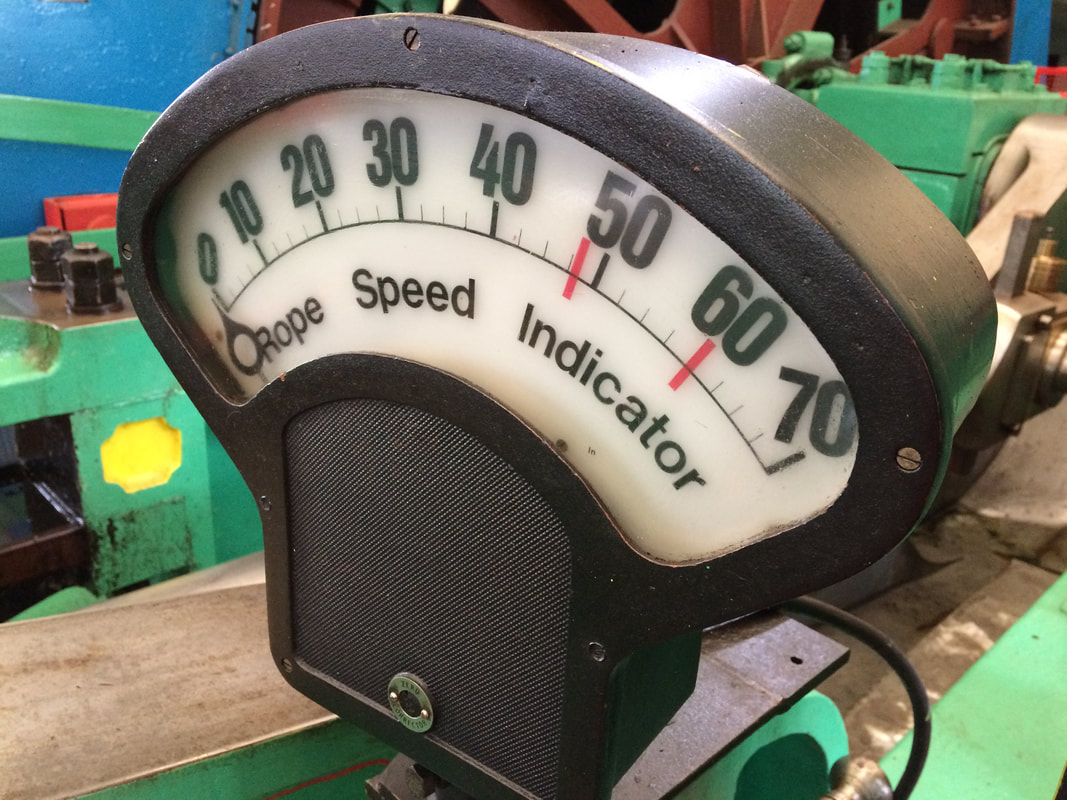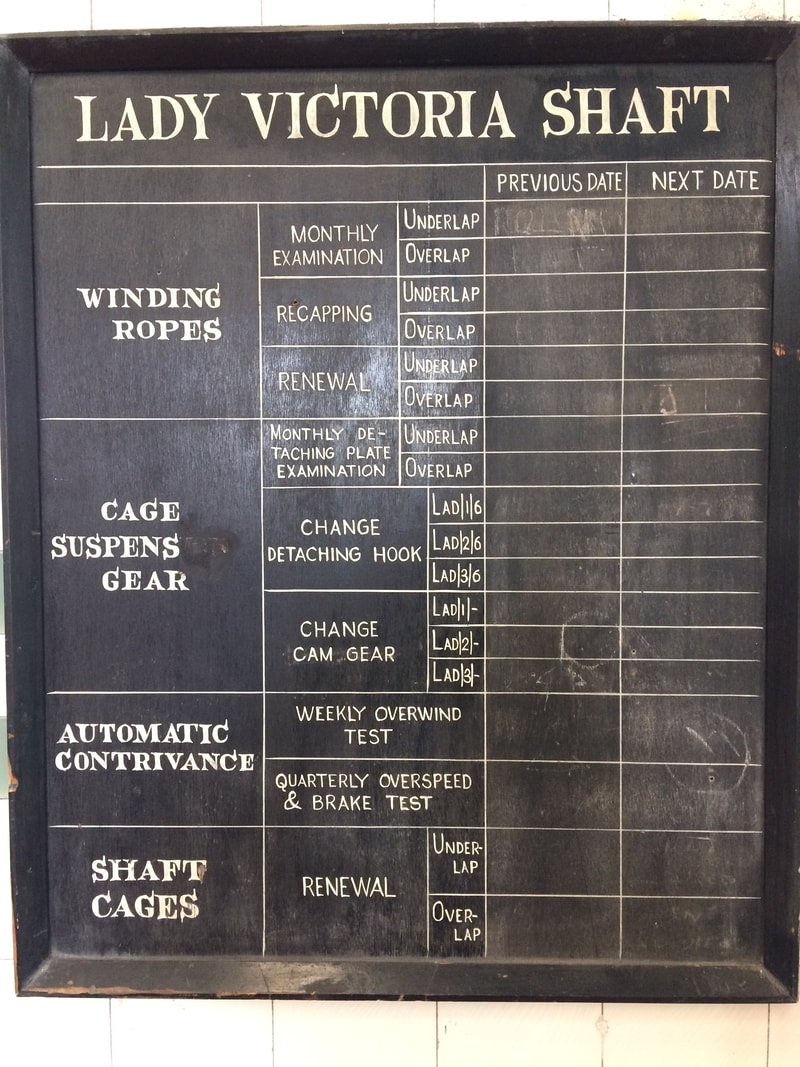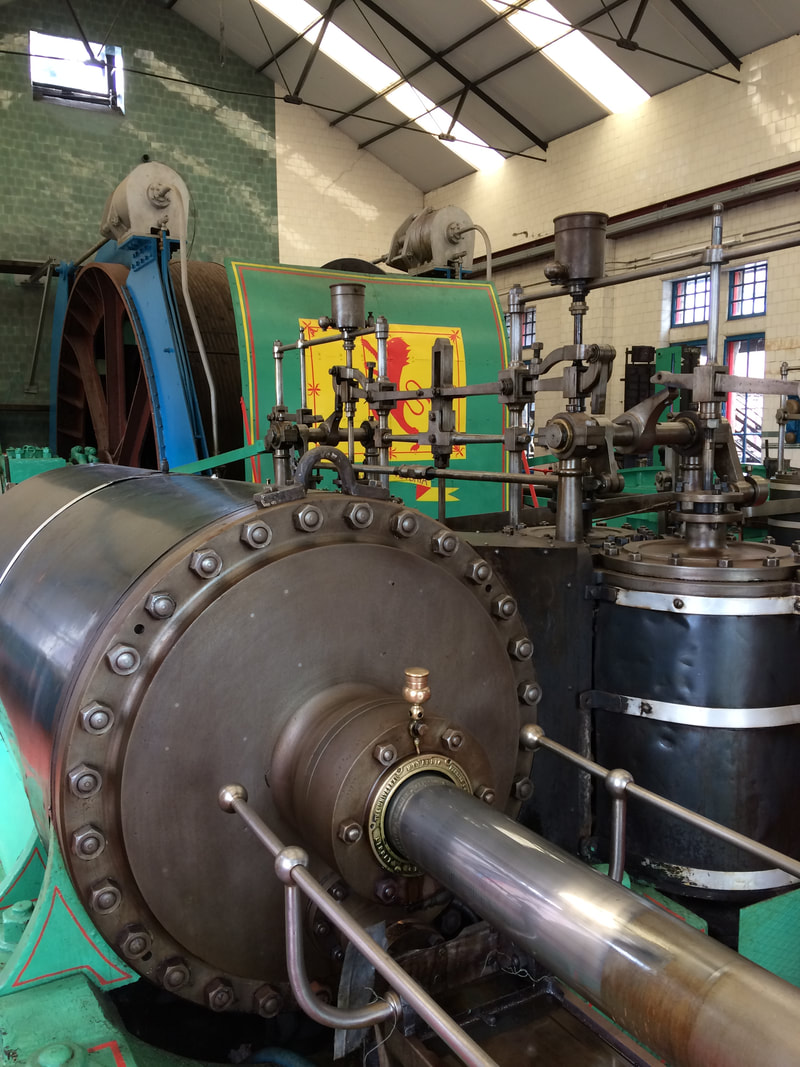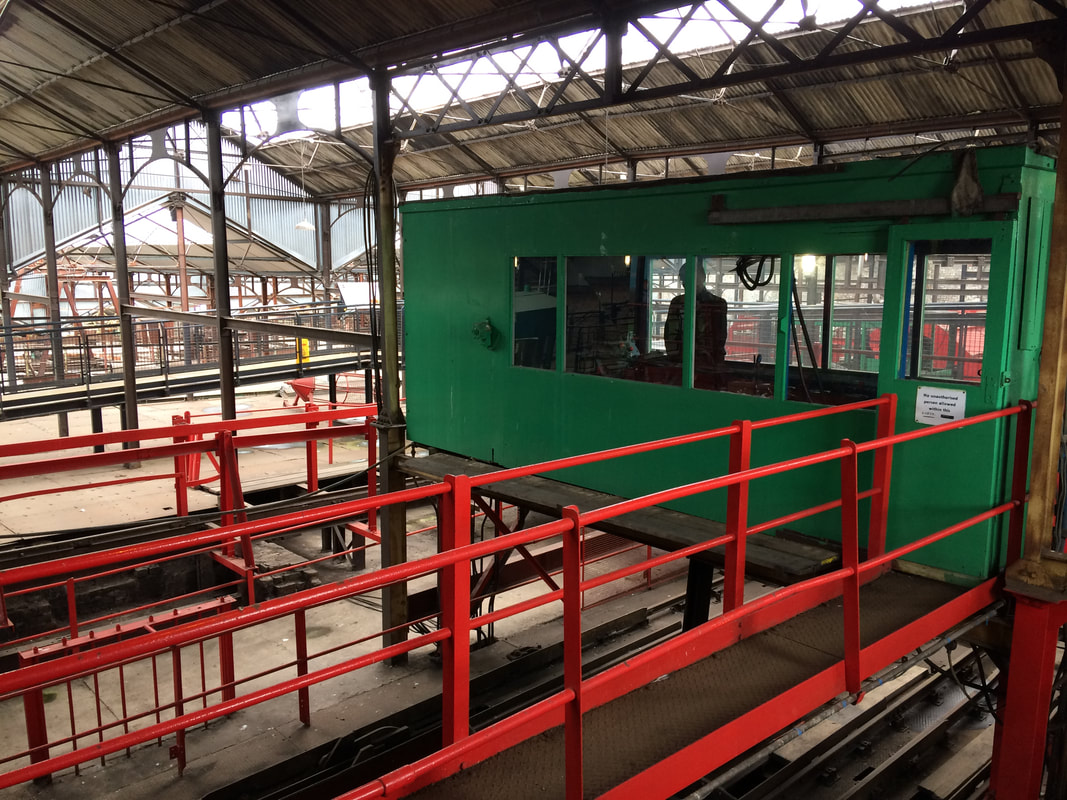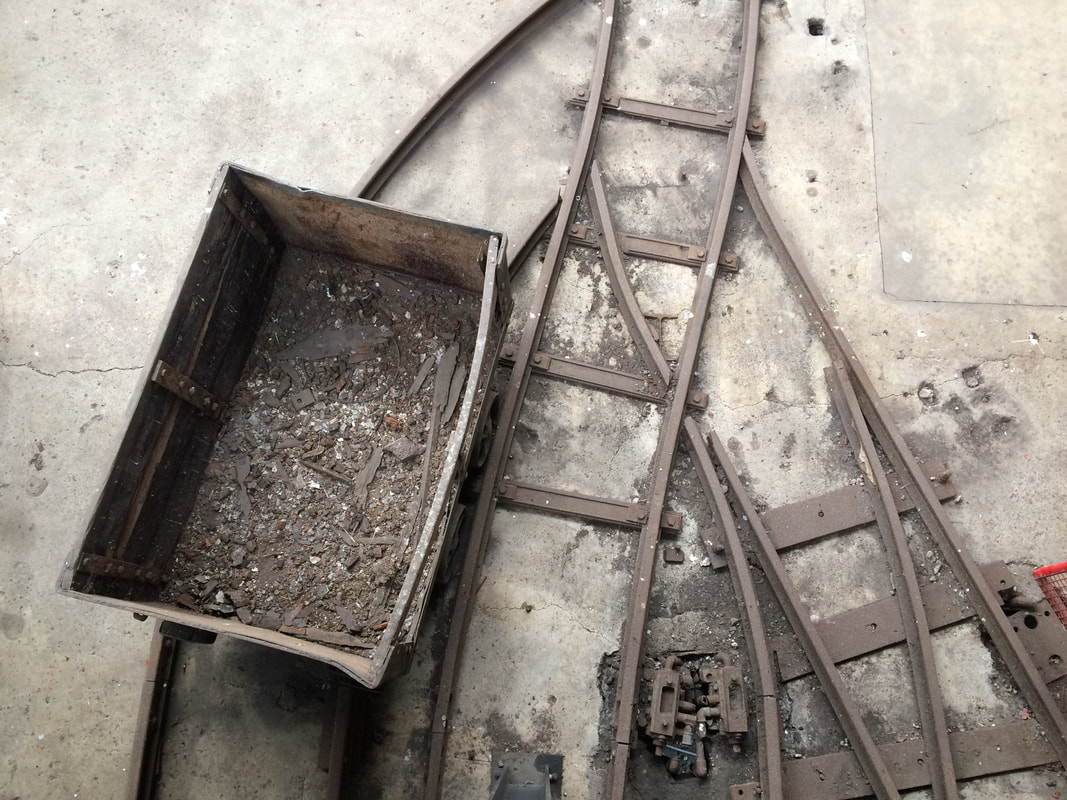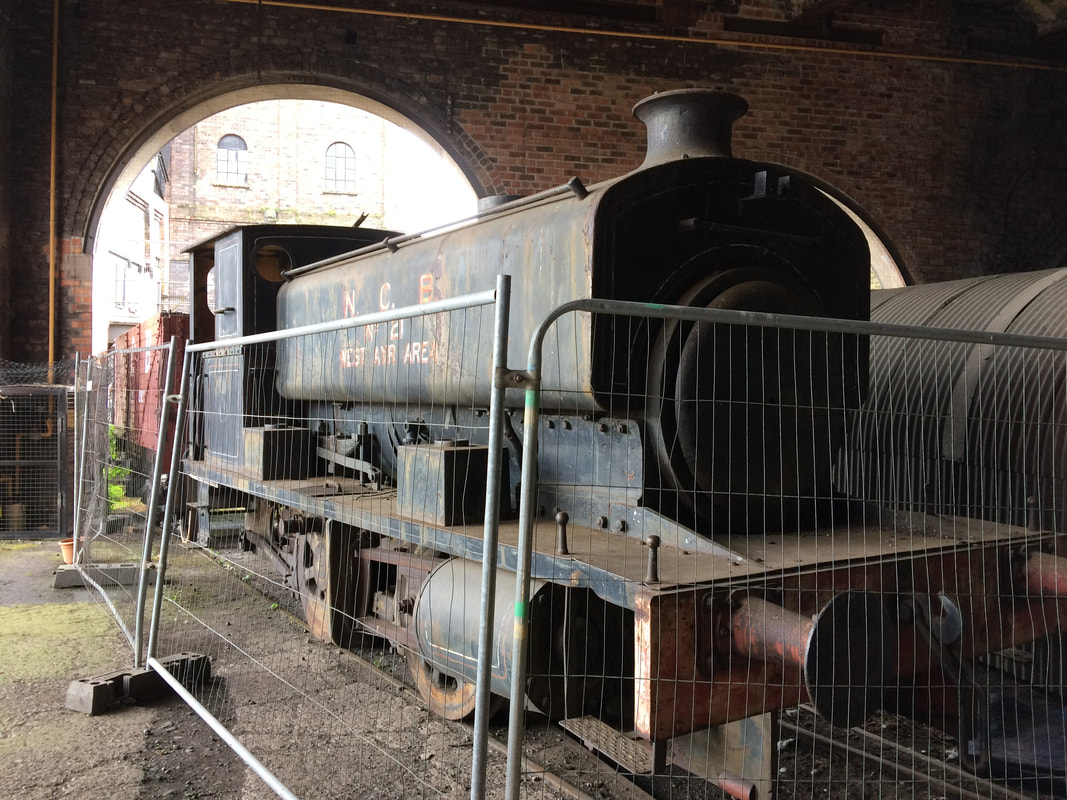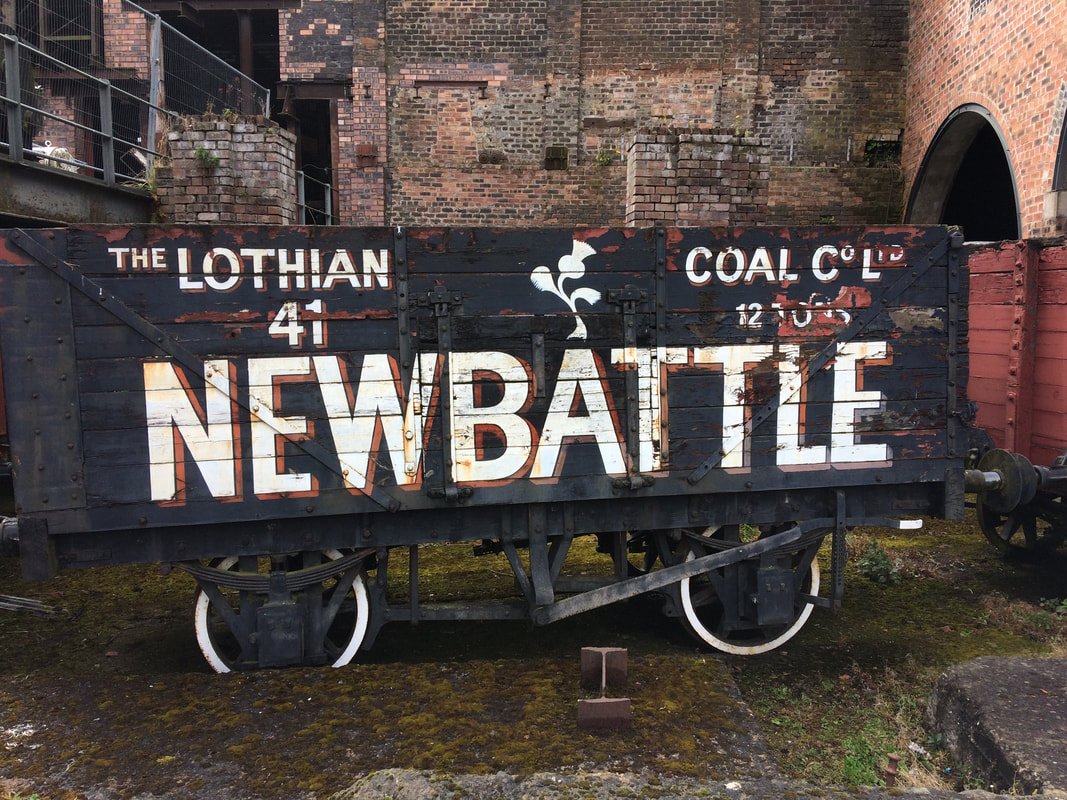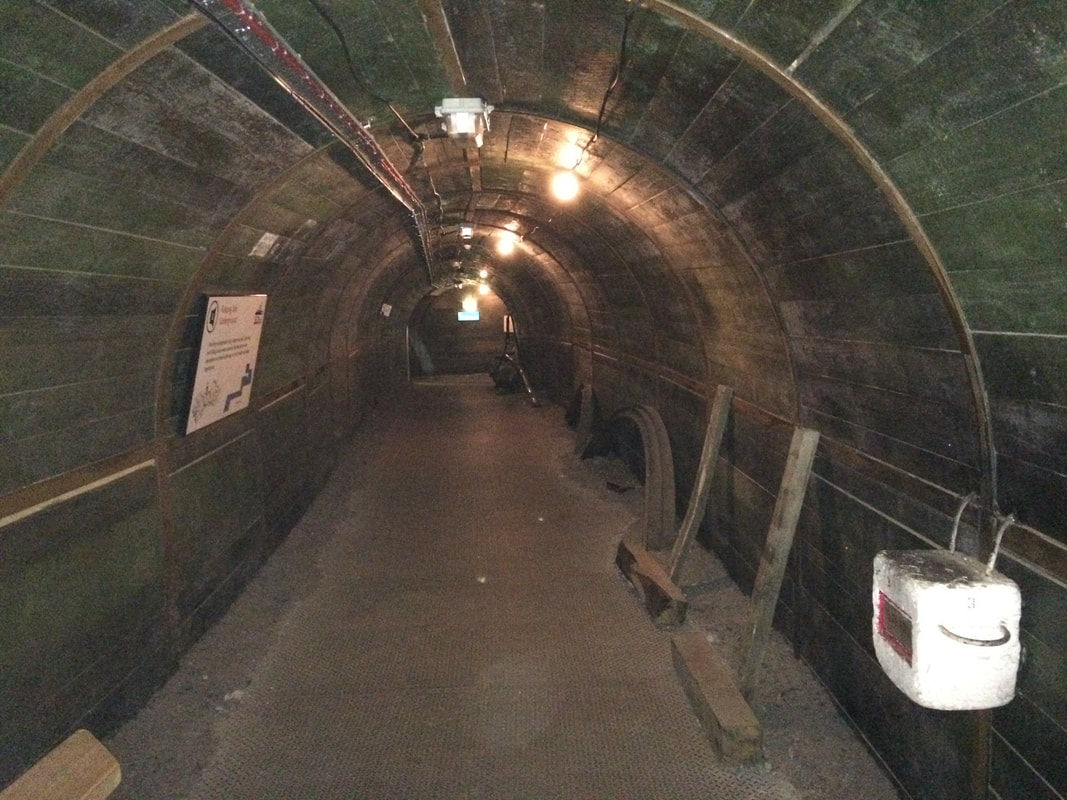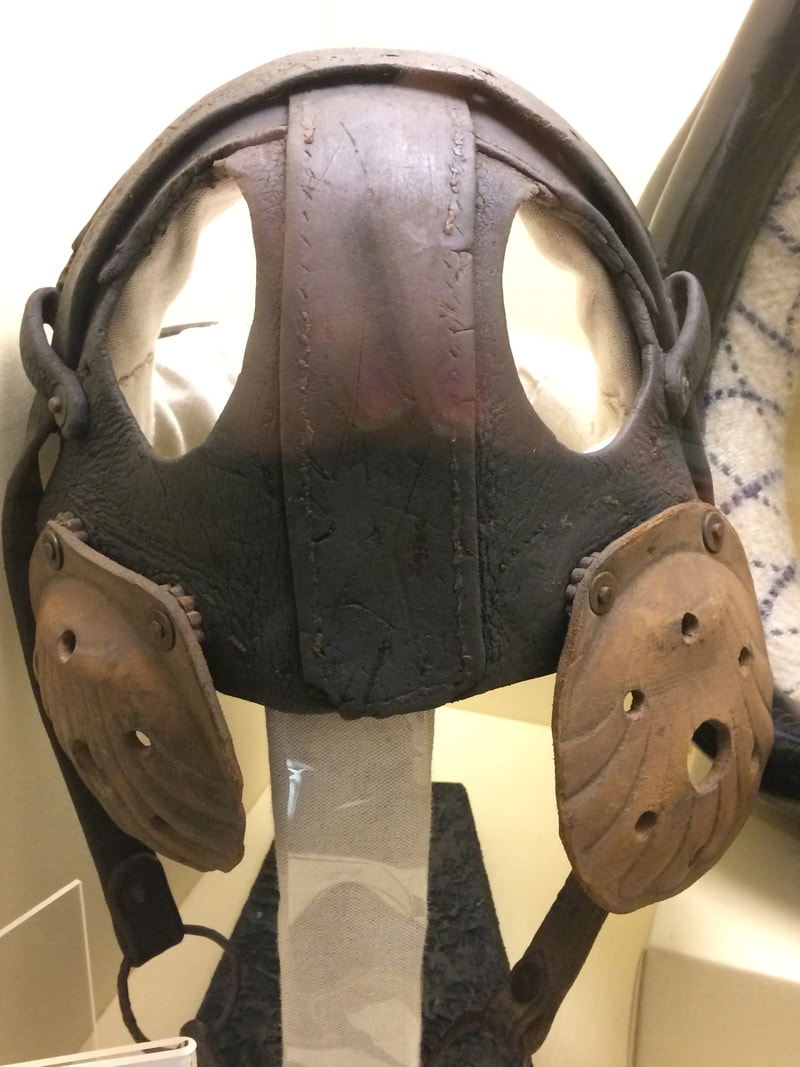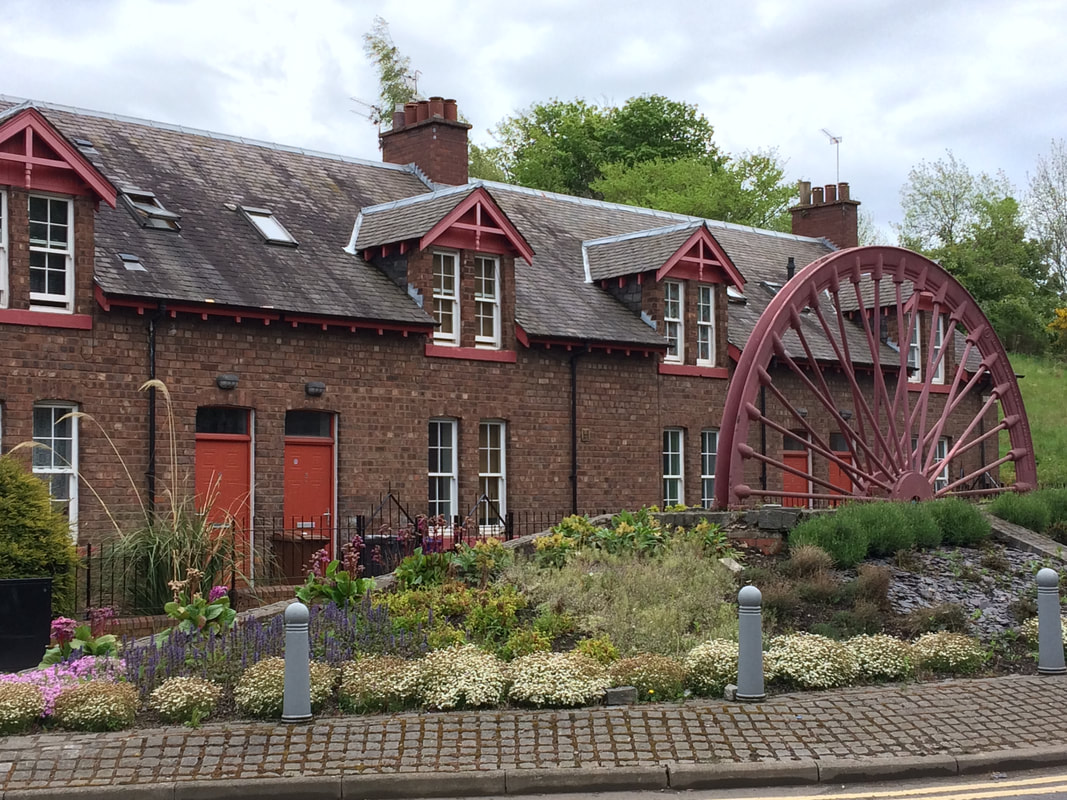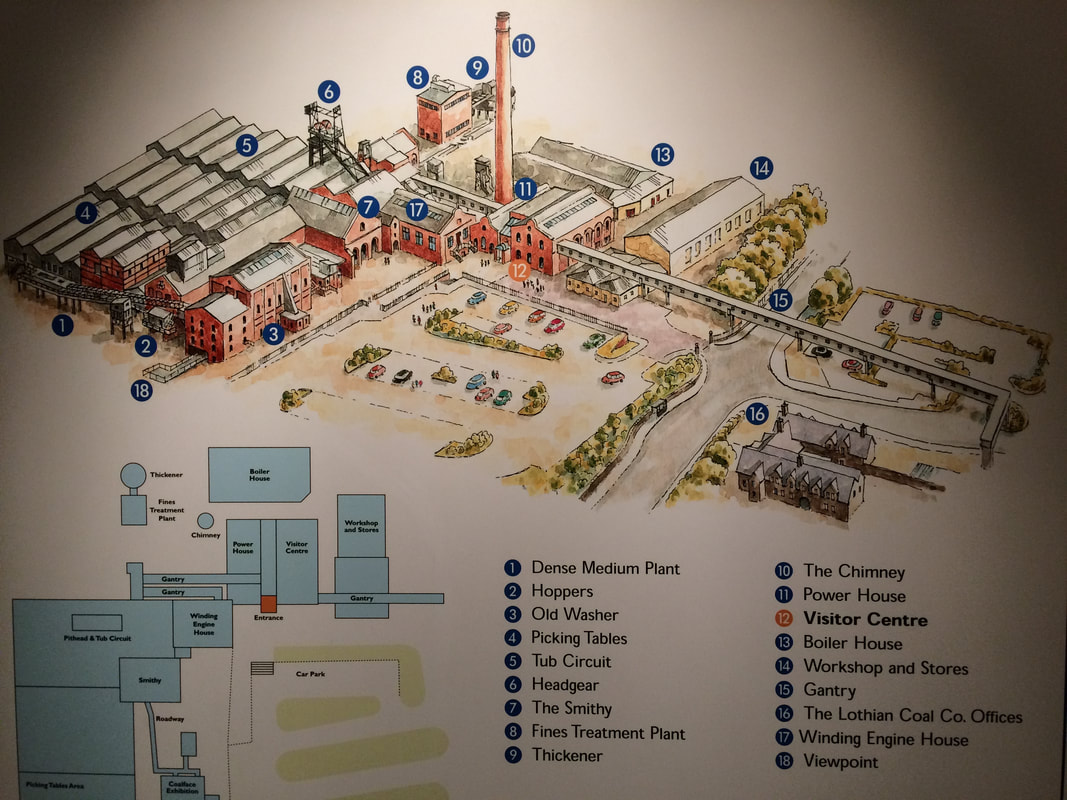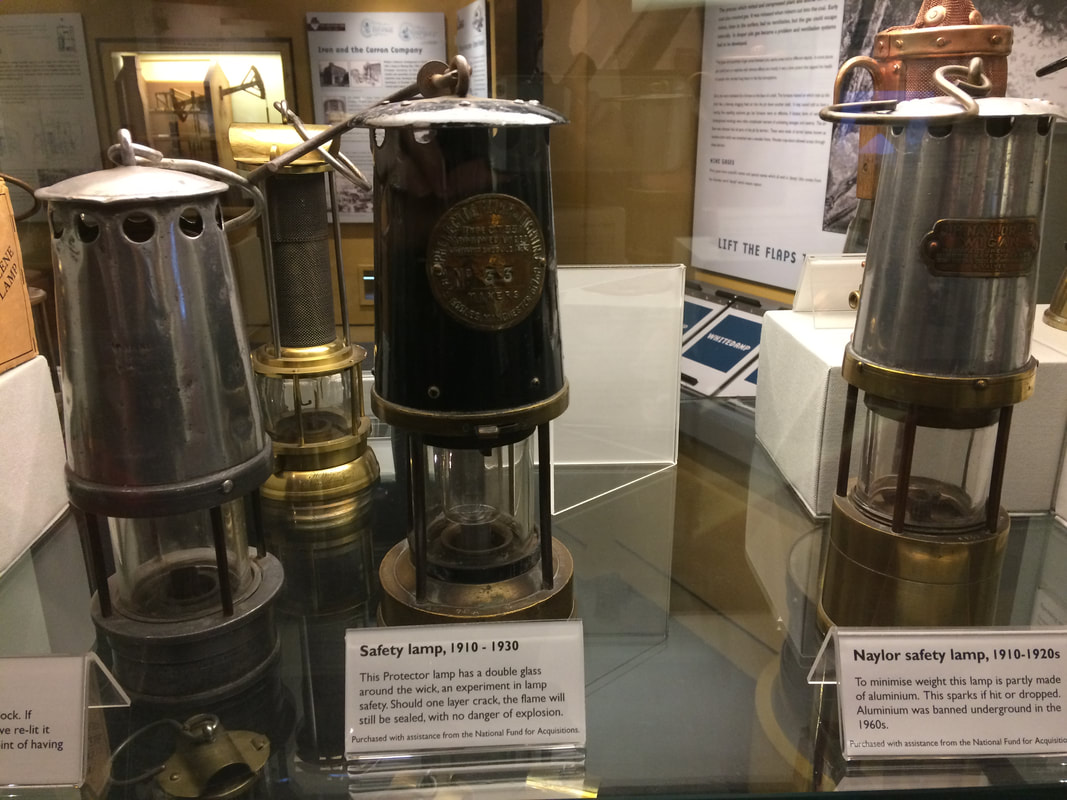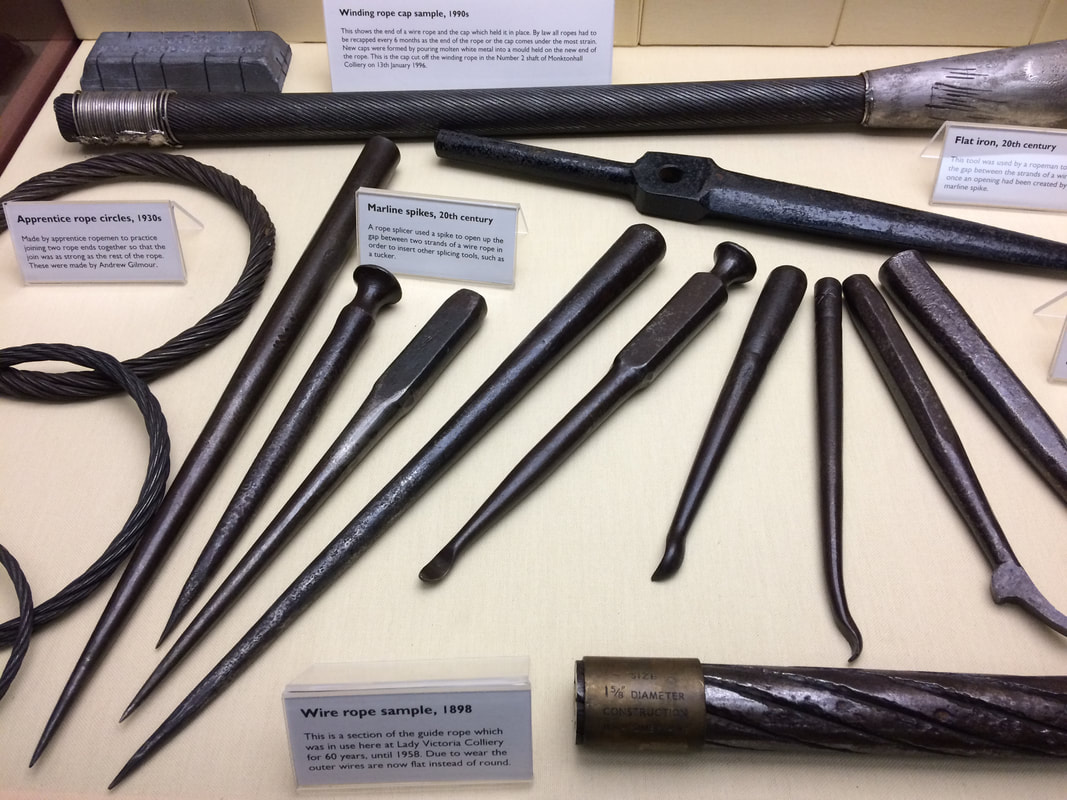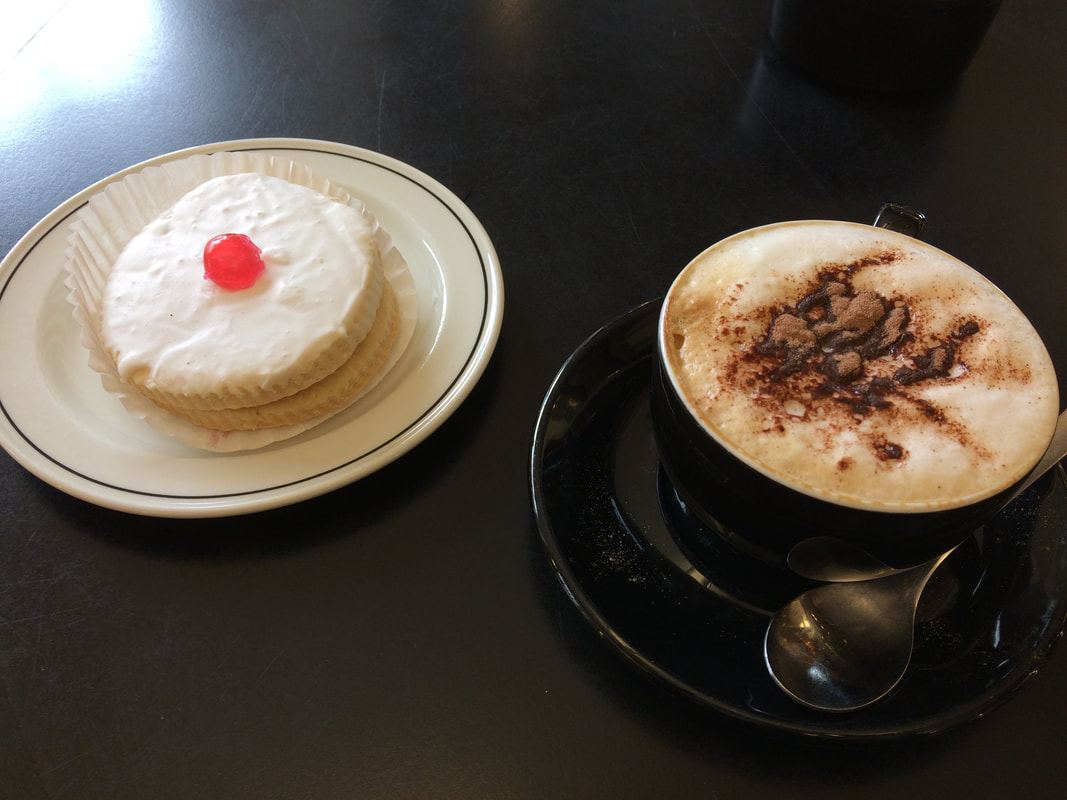|
The highlight of this museum is a guided tour by a former miner. These men are full of stories and provide a fascinating insight into their working life. The museum is easy to reach from Edinburgh using the Borders Railway. It is walking distance from Newtongrange Station.
How to Get There The museum is 8 miles from Edinburgh. It is located alongside Newtongrange train station on the Borders Railway, so you don't really need to use a bicycle to reach it. There are plenty of cycling routes in the Scottish Borders, so you could do a stop-off at the museum then get back on the train to head further south. The train takes about 20 minutes from Edinburgh.
A path links the station to the museum. It is uphill and really unsuitable for cycling so if you did bring the bike you will be pushing it or locking it up at the station. A nice feature of this path is that it has information panels that tell the story of the mine.
At one time coal mining was a hugely significant part of Scottish life with 148,000 miners employed in Scotland at the industry's peak. The path takes you past a scene of industrial decay with mine buildings looking like they are being reclaimed by nature. The museum is contained within the site of the Lady Victoria Colliery. It opened in 1895 and was named after the wife of the Marquess of Lothian who owned the land. The mine closed in 1981 and became the museum.
As you approach the entrance to the museum there is a small garden area that has gorgeous flowers and plants. A wheel from a winding engine has been put to use as a water feature and there are cute little paths winding through the trees and bushes.
The Victorian-era industrial architecture is beautiful with huge windows, impressive brickwork and glazed tiles inside.
Contrast this to the functional concrete bridge that is attached to the building and crosses the A7. This was built in the 1950s to link the building to a bath house.
Before the bath house was built the miners had to go home dirty. Their houses had a tin bath that was filled up with a kettle. If there was more than one miner in the family the most senior man got first shot at the bath. My tour guide, John, said of the youngest son, "By the time you got to the bath it was not very warm and not very clean."
Signing-up to one of the guided tours is the best way to experience the mine. My guide, John, had started working as a miner at the age of 15. He wore orange overalls and a helmet with a lamp. John talked through the various stages of going to work in the mine. First he picked up his lamp and then walked down the gangway. "This was the last opportunity for men to have a cigarette so this gangway was always thick with smoke. "
The next stage of John's journey to work was the lift down to the mines. It was a double deck lift that could take 30 men on each deck and took 1 minute and 20 seconds to reach the pit. "Made my stomach go," John told us.
The lift had two speeds and when it was used to carry coal back up to the surface it took just 40 seconds. "The lift operator was a trusted man who could never leave his post and had to make sure that he got the right speed when carrying men in the lift. Can you imagine if he used the coal speed when the men were in the lift?" The tour includes a visit to the engine room where the giant winding machine that carried the lift up and down to the mine is turned on for visitors. The room smells of engine oil and it is quite a thrill to see this huge wheel being turned by massive pistons. This was the most powerful winding engine in Scotland.
The largest part of the mine site is an area where coal was sorted and carried around in railway wagons. There are tracks, gangways and control booths spread over a giant area.
There is lots of interesting equipment to spot on the way around the tour route, including a National Coal Board train engine and coal wagons.
Our tour visited a reconstruction of an underground mine tunnel. It felt very realistic and John provided an excellent insight to life below ground. "No toilets in the pit" he told us. "You found a corner and then put a stone over it and put an x on the stone with chalk, so other men would know not to touch it!
John pointed out the first aid station. This included a morphine container encased in concrete as the men used to break it open and steal it.
"120 pit ponies lived underground and never saw daylight," John said. They had been used to haul coal wagons "Once they tried to take the ponies up to the surface in the lift, but they kicked and made such a fuss. When they were retired and went to the surface they were found to be blind." Later, in the museum, I found an eye guard for pit ponies. The 1911 Coal Mines Act made it mandatory for the ponies to have eye protection from the uneven sharp walls of the pit. It is upsetting to think that prior to this date the animals would be easily injured when walking through the tunnels.
Pit ponies learned how to open the miners' sandwich tins. These metal tins had been invented to stop rats from getting at the men's food, but the ponies could figure them out and steal a cheese and jam sandwich if a miner was not careful!
A stark illustration of how challenging mining life could be was provided by John: "In the days when private companies ran the mines and a miner died they lost their house; the family had to leave." The cottages that you see around Newtongrange village had been built for the miners.
One mine manager was particularly strict and used to walk around the village to see if any of the gardens were untidy. If they were the miner who lived in that house was called into the manager's office and given a row and his wages docked to pay for some other men to tidy up the garden.
Look out for the canaries- the museum keeps a few in cages. You will probably hear them chirping before you see them. Mines used to breed their own canaries as they were the best way to detect carbon monoxide. The birds would be overcome by the poisonous gas before the miners and this gave the men an opportunity to escape.
The museum site is massive as you can see from the map above. It includes an impressive collection of artifacts that have been put together to tell the story of the coal industry. It begins in the 12th century when monks were the first to mine coal. I was surprised to learn that coal is used in the manufacture of many products, including paint, batteries, lipsticks and soaps.
I read about a job that young boys had been employed to do- Trappers- which involved opening and closing ventilation doors for passing coal wagons. These boys sat on wet ground, sometimes up to their knees, for 12 hours per day performing this repetitive task. It was common for these poor lads to subsist on a single oatcake during their shift, so I felt lucky to be able to enjoy a very fine Empire Biscuit with my coffee in the museum's cafe.
If you fancy something more substantial the cafe has a good selection of sandwiches, burgers and baked potatoes.
I really enjoyed my visit to the museum. Even if you do not have a strong interest in coal mining you will find it fascinating, particularly if you take the tour from one of the ex-miners with their unique insight into this world. The museum is open 7 days per week and there is an admission charge. Visit the website for details. The Mining Museum is in Midlothian. Visit my Midlothian page for ideas of more places to visit in the region. I used the Borders Railway to travel to the museum. Read my blog post 8 Reasons to Love the Borders Railway to find out more about this line.
0 Comments
Leave a Reply. |
Categories
All
Archives
July 2024
|

